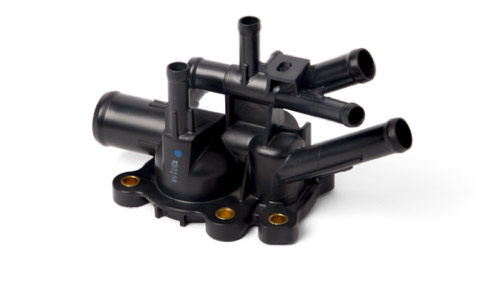Automotive Plastics Drive Sustainable Solutions on the Road to a Circular Economy

Credit: Shutterstock
Automakers and their suppliers are working to improve sustainability in the automotive industry, in part by accelerating the “circular economy.” Unlike the prevalent linear economic model — in which products such as vehicles are made, used, and discarded — under the circular-economy model products are designed and built to remain in use for as long as practicable. Then materials are recovered and reused to the practical extent possible at the end of life, reducing the need for virgin materials and helping keep materials out of landfills and our environment. So, for plastics and other materials, a circular economy is characterized by the circular use of materials, or circularity.
Circularity and the Automotive Industry
To achieve circularity, automakers and their suppliers are joining forces to re-envision the entire vehicle life cycle, from design to manufacturing and maintenance to end-of-life. Realizing a circular economy for vehicles will reduce their environmental footprint and help keep plastics (and other materials) in use and out of our environment.
A circular economy could help reduce our societal environmental footprint while getting more value out of our cars and trucks. According to a recent report, circularity presents a potential $4.5 trillion business opportunity by 2030 – and roughly $400-$600 billion could go to automotive companies and their suppliers, helping fuel more innovations to make vehicles more sustainable.
We recently published a detailed paper titled Transitioning Toward a Circular Economy for Automotive Plastics and Polymer Composites that lays out the automotive industry’s path toward circularity for plastics.
OEMs Are Working Toward to Circularity
As automakers commit themselves to circularity, original-equipment manufacturers (OEMs) who provide plastic- and polymer composite-based parts are increasing their use of recycled materials. These materials not only reduce demand for virgin materials, but also help reduce CO2 emissions over the lifecycle of the vehicle. Below are several examples of the wide variety of such products which support more sustainable outcomes that will advance circularity.
Solvay Group uses advanced materials to deliver product solutions for cars, batteries, aircraft, medical devices, and water treatment. Solvay’s Specialty Polymers division is manufacturing automotive parts at plants using 100-percent renewable energy in production. Solvay’s Augusta, Georgia facility manufactures high-performance polymers Amodel PPA (polyphthalamide) and KetaSpire PEEK (polyetheretherketone). Amodel PPA is valued for its strength and stiffness at high temperatures common in engine environments, and is used in thermostat housings, charge air coolers, diesel filter housings, fuel line components, and EGR valves. Amodel is also being used in EV motor (E-Motor) and power electronic components like resolvers, bus-bars, connectors, speed position sensors, and inverters.

This 10-port water outlet made from Solvay Amodel PPA consolidates multiple metal parts into one plastic part and saves weight. Credit: Solvay Specialty Polymers
Lanxess, a leading specialty-chemicals company, is developing thermoplastics-based components to support the growing electric-vehicle charging infrastructure. The company’s High Performance Materials division is working to use its Durethan polyamides and Pocan polyester materials in a charging-inlet design that will accommodate the charging coupler of the external charging station. The plastics materials will provide high electrical-insulation resistance and fire-retardant properties.
Modern plastics provide durable car interior parts such as headliners, panels and seats. Covestro, which specializes in polyurethane- and polycarbonate-based raw materials, has developed an innovative polyol material that uses up to 20 percent CO2 rather than fossil-based raw materials, thus reusing CO2 as a material source. This material, named cardyon by Covestro, is being used in a series of foam products that are incorporated into car interior parts.
Trinseo is a global manufacturer of plastics, latex binders and synthetic rubber. The company provides several plastics-focused product lines to the automotive industry based on ABS polymer and a range of thermoplastic elastomers and polyurethanes. Using its own life-cycle assessment (LCA) methodology to evaluate product designs from a circularity viewpoint, Trinseo recently introduced a series of materials that combine recycled polycarbonate with virgin ABS polymer to achieve 30 to 50 percent recycled content. The PULSE ECO product line has a variety of automotive applications, including mid/floor consoles, instrument panels and pillars. During manufacture, the PULSE ECO products require up to 48 percent less energy consumption and 38 percent less water than similar products.
As the automotive industry embraces sustainability and transitions to a more circular economy, OEMs are already rethinking the ways vehicles and their materials are designed, built, used, and recycled at end-of-life. We’ll see more such examples of their commitment over the next several years.
